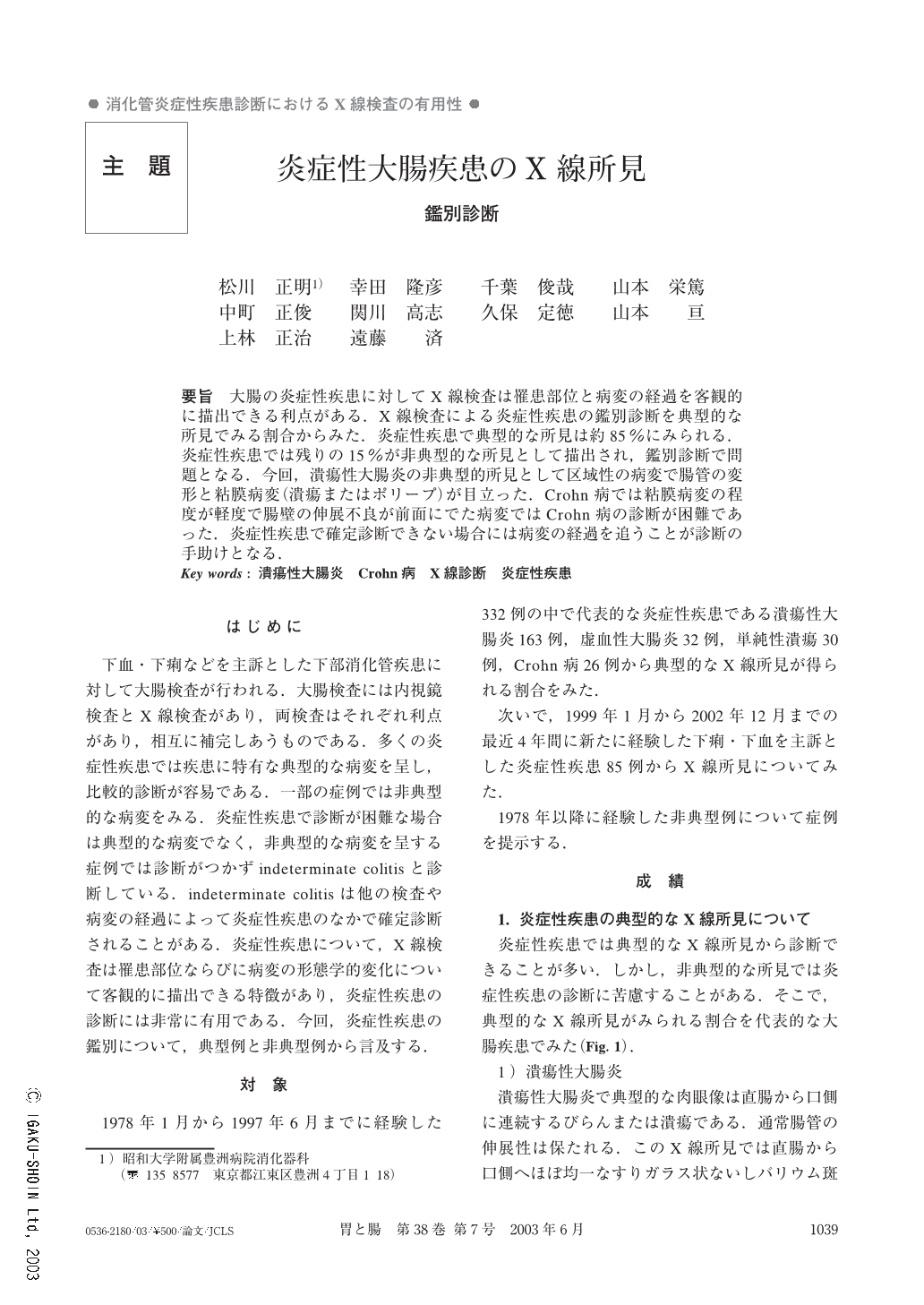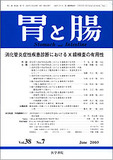Japanese
English
- 有料閲覧
- Abstract 文献概要
- 1ページ目 Look Inside
- 参考文献 Reference
要旨 大腸の炎症性疾患に対してX線検査は罹患部位と病変の経過を客観的に描出できる利点がある.X線検査による炎症性疾患の鑑別診断を典型的な所見でみる割合からみた.炎症性疾患で典型的な所見は約85%にみられる.炎症性疾患では残りの15%が非典型的な所見として描出され,鑑別診断で問題となる.今回,潰瘍性大腸炎の非典型的所見として区域性の病変で腸管の変形と粘膜病変(潰瘍またはポリープ)が目立った.Crohn病では粘膜病変の程度が軽度で腸壁の伸展不良が前面にでた病変ではCrohn病の診断が困難であった.炎症性疾患で確定診断できない場合には病変の経過を追うことが診断の手助けとなる.
An advantage of radiography is that it can demonstrate objectively the anatomic location and morphologic changes of the lesions in inflammatory disease in the colon and rectum. Therefore we can make a diagnosis of inflammatory disease by typical X-ray findings. Typical X-ray findings reveal about 85% of the inflammatory diseases. The other 15% are not recognized as typical findings. Therefore, it is difficult for us to make a diagnosis in these cases. Atypical findings in ulcerative colitis are local deformity of the colonic wall and local narrowing of the colonic cavity. Atypical findings in Crohn's disease are the appearance of mucosal lesions involved by extracolonic inflammation, but ulcer of the mucosa is not recognized. In this case we could make a diagnosis of Crohn's disease by detecting a longitudinal ulcer of the ileum. Because it was an atypical lesion we were able to make a diagnosis of an inflammatory disease by finding morphologic changes of the lesion or by other examination results.

Copyright © 2003, Igaku-Shoin Ltd. All rights reserved.


